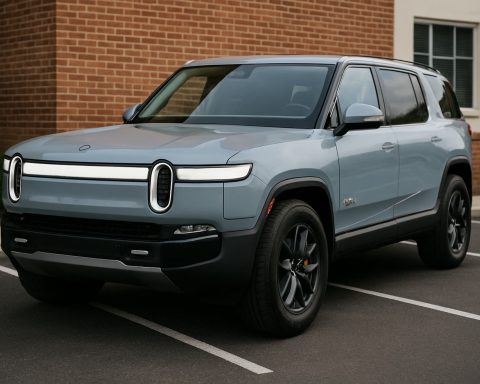- India is set to transition towards electric vehicles (EVs), aiming for over 123 million EVs by 2032 under the National EV Targets scenario.
- Policies like the FAME-II scheme play a crucial role, significantly boosting the adoption of electric two- and three-wheelers.
- As of 2024, electric two- and three-wheelers made up 93% of India’s EV market, while electric four-wheelers and larger vehicles trailed behind.
- The adoption of personal electric four-wheelers is driving the growth of private and home charging infrastructure.
- Public and captive charging points are expected to increase from 76,000 in 2024 to 2.1 million by 2032, requiring significant energy capacity expansion.
- India’s focus on sustainable transportation underscores its commitment to leading the global movement towards electric mobility.
Picture India’s bustling streets in the coming decades, a landscape dominated not by the cacophony of honking petrol engines but by the gentle hum of electric vehicles (EVs). The nation stands at a pivotal juncture, steering determinedly toward an era of sustainable transportation. By 2032, India could see a jaw-dropping surge in EV numbers, cruising past the 123 million mark, if the stars align under the National EV Targets (NEV) scenario.
Driving this transformation are policies as robust as the ambitions themselves, like the FAME-II scheme, which showers incentives on electric two-wheelers and beyond. In 2024, a testament to this strategy bore fruit as electric two- and three-wheelers together accounted for over 93% of India’s EV ensemble, leaving a modest share to electric four-wheelers and even less to buses and trucks.
The personal electric four-wheeler segment, however, stands as a beacon of the burgeoning private and home charging ecosystems. By 2024, these silent commuters numbered about 220,000 on the roads, primarily charging via residential Type-2 AC chargers. This glimpse into the future reveals not only the potential scale but the necessity for infrastructure growth.
By 2032, experts anticipate a staggering expansion—public and captive EV charging points proliferating from 76,000 in 2024 to a visionary 2.1 million. Installed charging capacity must leap from 1.3 GW to an eyewatering 23 GW, a reflection of the burgeoning demand for swift and convenient power-ups.
But this is far more than a tale of numbers. It’s about a country’s unwavering commitment to a sustainable and prosperous future. The journey towards an electric tomorrow is fraught with challenges, yet it promises a cleaner, quieter, more efficient India. As strategic investments flow and policy frameworks mature, India is poised to not only meet but lead the global electric mobility movement.
The message is clear and electrifying: India is not just adapting; it’s setting the pace, turning the winds of change into the driving force of its economic and environmental future.
A Glimpse Into India’s Electric Vehicle Revolution: Are We Ready for the Surge?
India’s Electrifying Future: The Rise of EVs
Picture India’s bustling streets in the coming decades, a landscape dominated not by the cacophony of honking petrol engines but by the gentle hum of electric vehicles (EVs). The nation stands at a pivotal juncture, steering determinedly toward an era of sustainable transportation. By 2032, India could see a jaw-dropping surge in EV numbers, cruising past the 123 million mark, under the National EV Targets (NEV) scenario.
Driving this transformation are policies as robust as the ambitions themselves, like the FAME-II scheme, which showers incentives on electric two-wheelers and beyond. In 2024, a testament to this strategy bore fruit as electric two- and three-wheelers together accounted for over 93% of India’s EV ensemble, leaving a modest share to electric four-wheelers and even less to buses and trucks.
Features, Specs & Pricing
Electric Two-Wheelers and Three-Wheelers
Electric two-wheelers and three-wheelers have witnessed rapid adoption due to their cost-efficiency and suitability for short-distance commuting. Typical models offer:
– Range: 60-100 km per charge
– Pricing: ₹30,000 to ₹100,000 (approximately $400 to $1,300)
– Charging Time: 4-6 hours using standard AC chargers
Electric Four-Wheelers
While electric four-wheelers currently represent a smaller fraction, they are crucial for the growth of private and home charging ecosystems. Key features include:
– Range: 200-500 km per charge
– Pricing: ₹1,500,000 to ₹3,000,000 (approximately $20,000 to $40,000)
– Charging Infrastructure: Primarily residential Type-2 AC chargers
Market Forecasts & Industry Trends
By 2032, experts anticipate a staggering expansion—public and captive EV charging points proliferating from 76,000 in 2024 to a visionary 2.1 million. Installed charging capacity must leap from 1.3 GW to an eye-watering 23 GW, reflecting the burgeoning demand for swift and convenient power-ups. Analysts expect:
– Compound Annual Growth Rate (CAGR): Approximately 36% for the EV market in India
– Increased Investment: Major automakers and tech companies are expected to invest heavily
Challenges & Limitations
Infrastructure Development
One of the most pressing challenges remains the infrastructure development needed to support this EV explosion. The number of charging stations must grow exponentially to meet demand, while the electrical grid requires significant upgrades to handle increased capacity.
Battery Technology
Battery costs and reliability are crucial. Although costs are dropping, there’s an urgent need for more efficient and environmentally friendly battery technologies.
Insights & Predictions
Experts predict that India’s focus on renewable energy sources will bolster EV adoption rates even further, complementing the government’s keen interest in reducing carbon footprints.
How-To Steps & Life Hacks for EV Owners
1. Maximize Battery Life: Avoid overcharging; use smart chargers.
2. Leverage Government Incentives: Research available subsidies and tax benefits.
3. Plan Charging Stops: Utilize apps to find nearest charging stations.
Pros & Cons Overview
Pros
– Environmental Impact: Reduction in greenhouse gases and noise pollution
– Operational Cost: Lower than petrol/diesel vehicles
– Government Incentives: Subsidies and incentives available
Cons
– High Initial Cost: Higher initial purchase price compared to traditional vehicles
– Charging Time: Slower compared to refueling petrol vehicles
– Limited Availability of Charging Infrastructure: Still developing
Actionable Recommendations
– Stay Informed: Follow FAME India for the latest updates and incentives.
– Explore Financing Options: Consider loans/subsidies dedicated to EVs.
– Invest in Home Chargers: Essential for convenience and efficiency.
India is not just adapting but setting the pace in the electric mobility sector. With ambitious investments and policies, the nation is poised to lead the global movement towards a more sustainable future. Will you be part of this electrifying journey?






